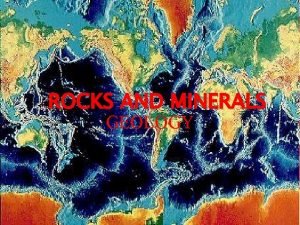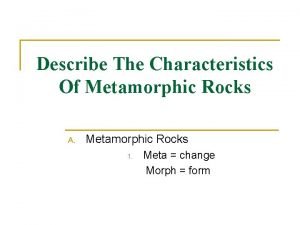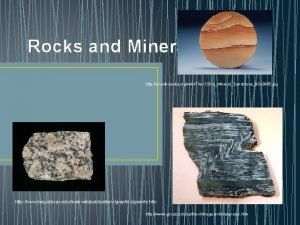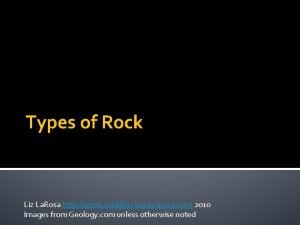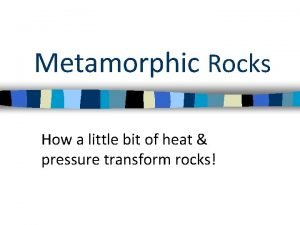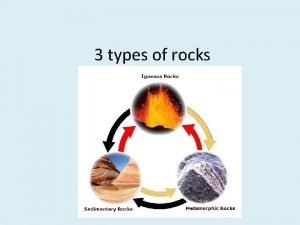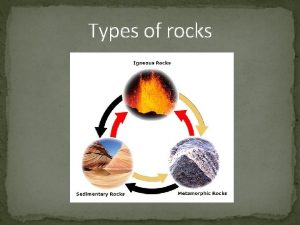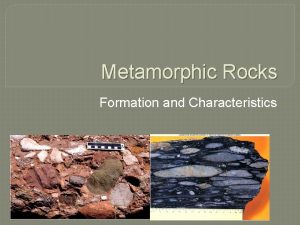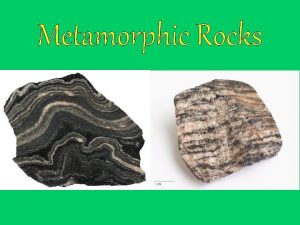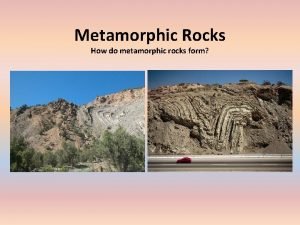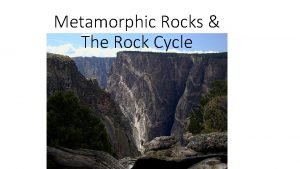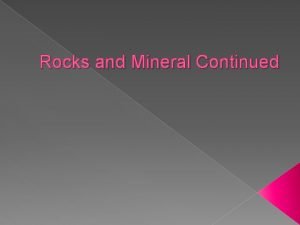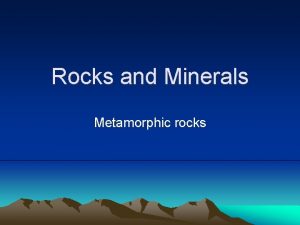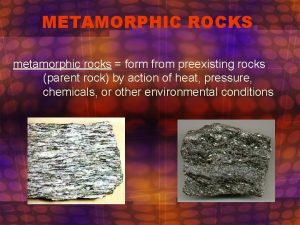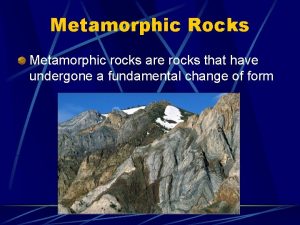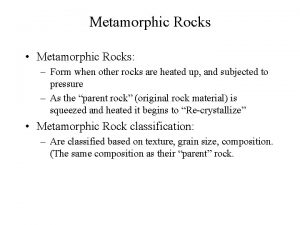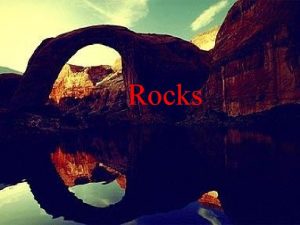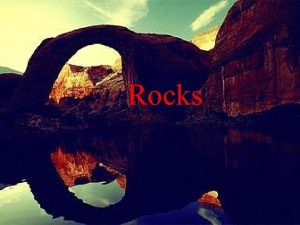Metamorphic Rocks Formation and Characteristics Metamorphic Rocks Meta
















- Slides: 16

Metamorphic Rocks Formation and Characteristics

Metamorphic Rocks �“Meta” means change (Greek) �“Morph” means form (Greek) �A rock that has been changed from its original form (parent rock) by heat, pressure, and fluid activity into a new form (daughter rock).

Types of Metamorphism �Contact – caused by proximity to igneous activity. Heat causes minerals to recrystallize but not melt. �Dynamic – associated with faults and earthquake zones �Regional – Caused by tremendous pressures associated with plate tectonics. Deep burial.

Progression of Metamorphism Start with a shale and then hit it with heat and pressure! More Heat & Pressure Rock Name Rock Type Grade of Metamorphism Shale Sedimentary ----- Slate Metamorphic Low Phyllite Metamorphic Low/Intermediate Schist Metamorphic Intermediate/High Gneiss Metamorphic High Molten Rock Cools into Igneous Rock -----

Shale (Sedimentary Rock) Heat & Pressure Slate (Metamorphic Rock)

Slate (Metamorphic Rock) Heat & Pressure Phyllite (Metamorphic Rock)

Phyllite (Metamorphic Rock) Heat & Pressure Schist (Metamorphic Rock)

With even more heat & pressure (High-Grade Metamorphism) … you end up with something that is really Gneiss!

Metamorphic Progression of Shale � Light compaction results in sedimentary rock, Shale � As heat and pressure increase the rock undergoes changes. � There can be intermediate members.

Metamorphic Textures �Foliated • “Folios” means page, or leaf-like • Rock has distinct layers �Often not smooth layers like sedimentary rock • Formed under direct pressure (ex. Pushing down)

Foliated Texture

Foliated Metamorphic Rock � Slate, Schist, Gneiss are all foliated Metamorphics and result from tremendous pressure rather than intense heat.

Non-Foliated Metamorphic Rock �Non-foliated • No distinct layers • Often a massive crystalline structure • Formed under uniform pressure (all directions) • More result of high temp and low/ medium pressure

Non-foliated Rocks • Marble: - metamorphosed limestone Quartzite: • • Quartzite: -- metamorphosed quartz sandstone quartz


Summary � Rocks whose form is changed by temperature and pressure. � 3 different types • Contact • Dynamic • Regional � 2 Textures • Foliated • Non-foliated � More temperature changes and pressure = more
 Igneous and metamorphic
Igneous and metamorphic Compaction and cementation
Compaction and cementation Formation of metamorphic rocks
Formation of metamorphic rocks Granite parent rock
Granite parent rock Metamorphic rocks characteristics
Metamorphic rocks characteristics Characteristics of metamorphic rocks
Characteristics of metamorphic rocks Characteristic of metamorphic rocks
Characteristic of metamorphic rocks Metamorphic rocks properties
Metamorphic rocks properties Characteristics of metamorphic rocks
Characteristics of metamorphic rocks Foliated rocks
Foliated rocks Meta sinclair
Meta sinclair Sedimentary and metamorphic rocks chapter 6
Sedimentary and metamorphic rocks chapter 6 Concept map
Concept map Metamorphic grade
Metamorphic grade Metamorphic rock formation
Metamorphic rock formation Metamorphic rocks with a layered or banded look are called
Metamorphic rocks with a layered or banded look are called Chegg
Chegg





